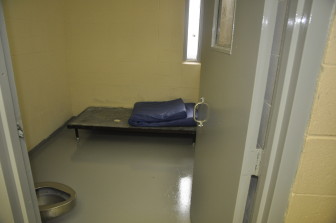
Ryan Schill / JJIE
Editor’s note: JJIE is a partner with NJJN in producing the Juvenile Justice Resource Hub.
Nine states that saw dramatic reductions in the number of kids they put behind bars are given a close look in a new report issued by the National Juvenile Justice Network (NJJN) and the Texas Public Policy Foundation.
The states evaluated in the report -- California, Connecticut, Illinois, Mississippi, New York, Ohio, Texas, Washington and Wisconsin -- all saw their juvenile incarceration rates decline between 2001 and 2010 after moving to community-based alternatives and enacting policies to keep youth out of detention centers if they are charged with only minor offenses.
“Since the year 2000, those nine states have not only greatly reduced the number of youth that are unnecessarily imprisoned or placed in detention centers, but they have also adopted policies that can pave the way for continued and safe reductions in secure confinement,” the report reads. “In other words, for these nine states, it took only a decade after the turn of the century to more than reverse the 15-year increase in the number of youth incarcerated in public facilities.”
The authors of the report, “The Comeback States: Reducing Youth Incarceration in the United States,” chose the nine states because each used at least four of six techniques thought to reduce incarceration rates, including downsizing facilities and addressing policies that lead to a school-to-prison pipeline. Each state surpassed the national average for reduction of juvenile incarceration rates during the assessment period. The nine states also saw decreases in youth arrests.
Combined, the states saw their total juvenile incarceration levels fall approximately 38 percent from 2001 to 2010, beating the national average by some 6 percent.
